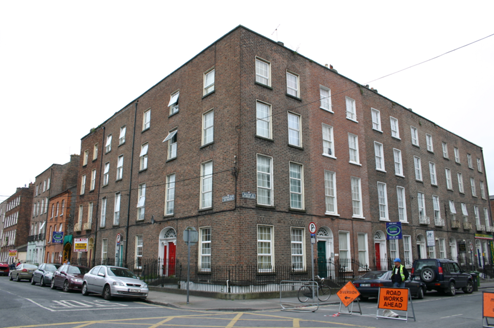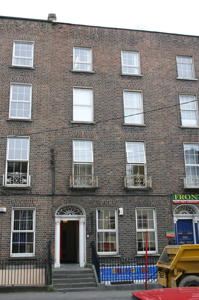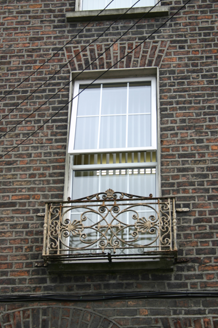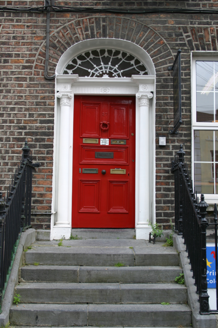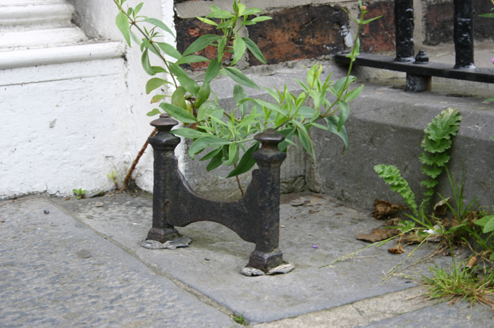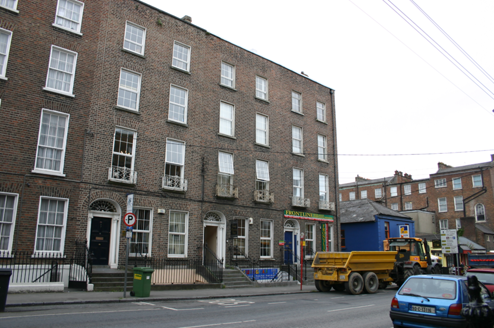Survey Data
Reg No
21517214
Rating
Regional
Categories of Special Interest
Architectural, Artistic
Original Use
House
In Use As
Office
Date
1830 - 1845
Coordinates
157438, 156646
Date Recorded
17/07/2005
Date Updated
--/--/--
Description
Terraced two-bay four-storey over basement red brick former townhouse, built c. 1840, with three-centred arch door opening. Single-bay three-storey return to rear. M-profile roof concealed behind parapet wall with chimneystack to east and west party walls. Red brick façade laid in Flemish bond, with cement re-pointing. Torch-on felt flashed coping to parapet wall. Rendered basement elevation with limestone ashlar plinth course delineating ground floor level. Cement rendered rear elevation and red brick return elevations. Square-headed window openings to front and rear elevation with red brick flat arches, patent rendered reveals, limestone sills, and replacement uPVC casement windows. Cast-iron Adamesque balconette, with palmette motif to first floor level. Three-centred arch door opening, with red brick arch, patent rendered reveals, three-quarters engaged Composite columns having ribbon bows beneath capitals, supporting entablature with fluted frieze having rosette detailing, and breaking forward over columns; original flat-panelled timber door leaf with horizontal central panel and Wellington door knocker; original lead detailed webbed fanlight, now cleaned to reveal delicate detailing. Flight of limestone steps to limestone flagged front door platform, with cast-iron bootscraper. Steps flanked by limestone plinth wall supporting original though railings, with horizontal lower rail, spearhead finials, and Neo-classical cast-iron rail posts with pineapple finials, returning west to enclose stone flagged front site basement area. Original rubble limestone coach house survives to rear, now rendered, and converted to residential use. It retains the red brick arch of the coach entrance.
Appraisal
This former townhouse retains the four-storeys over basement format of the houses facing O'Connell Street, however the width of the plot of each house on the terrace is substantially less than those at O'Connell Street. The structure contributes significantly to the architectural uniformity of this north-facing terrace. The Adamesque cast-iron balconettes appear on a number of houses on the terrace, further adding to the architectural interest of the terrace. The survival of the coach house to the rear is also significant.
